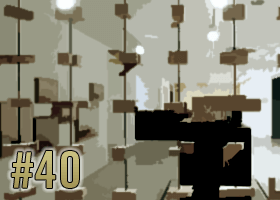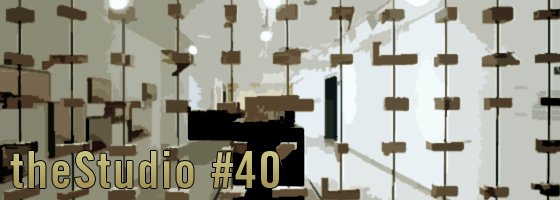The Studio 40: The Master Builder
by Tim Alatorre
-
Posted on September 24, 2010
-
Antoine Predock, ArchiCAD, Cal Poly Pamona, construction, Development, Economy, Green Architecture, Modeling, Modern Architecture, Real Estate, Recession, Teaching, Woodbury
Podcast: Play in new window | Download (36.1MB)
Subscribe: iTunes | Android | RSS
Lloyd Russell, AIA, (B’Arch ’91) talks about how he made the transition from student to teacher and architect to master builder. He talks about his design process and how he can design through construction without scaring his clients.
Executive Producer: Henri de Hahn
Don’t forget to tell your friends about us, join our Facebook Group, leave reviews on iTunes, vote for us on Podcast Alley, and follow us on Twitter!

Show Notes
Site News
- Thanks to Henri, Josef, Tracee, and everyone!
- New Facebook Fans
- Geri Ooi
- Jose Silva
- Anthony Preston
- Fazal Khan
- Craig Howard
- David Wachtel
- Rich Milstead
Cal Poly News
- (pamona) http://la.curbed.com/archives/2010/09/heaveho_for_cal_poly_pomonas_pointy_obelisk_tower.php
- Student Digest 9/21/10
General News
- Recovery? What Recovery?
- Recession’s over, economists say to a skeptical public
- A declaration that the turning point came in June 2009 gets an indignant reaction, showing that many Americans see little difference between the recession and current conditions.
- US architecture billings index rose in August-AIA
- August ABI up 0.3 pts to 48.2, for 3rd consecutive gain
- Construction surprisingly up 10.5%
- Housing experts welcomed the news but say we won’t see a sustained recovery until spring.
- http://www.startribune.com/business/103492854.html?elr=KArksLckD8EQDUoaEyqyP4O:DW3ckUiD3aPc:_Yyc:aUUsZ
- Architects (and architecture) the Recession Claimed
- Arch grounds plan gives park a new spin
- Follow up from Episode 036
- http://www.stltoday.com/news/local/metro/article_abeff008-a57b-5a31-99a3-b832824ef561.html
- http://urbanstl.com/
- The Greener School
- most important project of the 21st century: any green school!
- http://www.architectmagazine.com/blogs/postdetails.aspx?BlogId=opecoblog&postId=97595
- Fifth annual Park(ing) Day
- Around the world, parking spaces were transformed into miniature public parks and community centers last Friday
- http://www.wired.com/autopia/2010/09/groups-build-parks-from-parking-spaces/
- http://laist.com/2010/09/18/parking_day_la_2010_east_hollywood.php
- Buckminster Fuller’s Dymaxion Car #4 has been commissioned by British Architect Norman Foster
Rapid Fire Questions:
- Cal Poly or Berkeley? Cal Poly
- Autocad or Revit or ArhicCAD? ArchiCAD
- Parallel bar or T-Square? Parallel bar
- Facebook or LinkedIn or Twitter? Facebook
- Arch Record, Arch Digest, or Architect? eek!
- Drafting dots or tape? tape
- Yellow trace or white? white
- Ad Markers or Prisma? Prisma
- Pen or Pencil? Pencil
- Mac or PC or UNIX? MAC
- What’s the Meaning of Life? 42
SCORE: 92,210
Interview
- Why ArchiCAD
- When he graduated in ’91 there wasn’t any work, his first job involved hand drafting and he was eventually forced into ArchiCAD since
- He prefers to stare at a piece of paper rather than a computer screen
- Had an extra ArchiCAD disk laying around so that’s what they used
- Why the “ek” to architectural magazines…
- They can jade your perception of architecture
- He prefers older magazines, the new magazines can be too seductive
- Why architecture…
- Mr. Brady on the Brady Bunch didn’t wear suits and he thought that was cool
- He spent high school in the wood shop and then ventured into art class and discovered he could draw
- On a road trip through San Luis Obispo, he walked into one of the studios and knew that “this” is what he wanted to do
- He was accepted to Cal Poly under another major, but started showing up to arch classes anyways
- After graduation…
- There wasn’t much work in ’91, it was a recession similar to the one we’re currently in
- It seemed like everyone went to San Francisco
- He believed what he was told: “Architects will save the world”, but everytime he drove through L.A. he wondered how that could be
- Discovered that a large part of building and architecture is to make money, so he pursued the developing route
- Becoming the developer and the contractor yourself bypasses the client
- Construction experience with an eye toward development was the route he went
- There were no jobs, so his mantra was: “find a building you like, find out who did it and knock on their door”
- He started working with an architect interested in real estate/developer route
- The attitude become “do what ever you can do”, teaching, practicing, community, if you do them all then you’ll stay afloat
- How did you take that first big step to work on your own
- When there’s no work it’s easier to just go out on your own
- The first project is the hardest and you have to team up with someone who trusts you
- Find a property owner, for sweat equity get a stakehold in the project
- It becomes a matter of getting your project built, you become the master builder
- Why does the architect get paid less than anyone else
- It’s become a method of learning how to wear the other hats involved to becoming a master builder
- The transition to teaching…
- There weren’t any schools in the San Diego area
- NewSchool was a night school
- When you’re teaching you’re also learning from your students
- http://www.woodbury.edu/s/131/mba.aspx?sid=131&gid=1&pgid=1493
- Influence of Construction experience
- While there’s money in construction, he was careful to not get pulled into it, rather always keep his eye on the architecture
- The trades do it day in and day out and have skills that architects can learn from
- Learning from the trade and the craft he can better express how the building is built
- If he can understand the trade himself he can make it more cost effective, better detail and get better bids
- Design Inspiration
- Models and the sculptural experience of the building
- Allow for the happy accidents
- There’s no formula
- It’s not a control thing, it’s a matter of being central to the process
- When everything comes together, social, economic, artistic, that’s the success of the design
- The R3 Building
- His favorite to date
- It marked an iconic point for him
- A crazy building on a crazy piece of property
- What makes good design
- Expresses the how/why it was built and the social, economic, artistic facets of it being built
- Thoughts on Cal Poly students
- Not many of them come down to San Diego
- Advice to Cal Poly students and grads
- Just create a dialouge with Firms you respect, even if they’re not hiring you should try and become a part of the community
- When you’re hired it’s not just your resume or portfolio, it’s the type of team player you can be and how you can learn
- Sending resumes usually just end up in a file
- If you have initiative that shows more than sending a resume
- Having a good attitude and a willingness to learn can take you far
- Finishing a project in Hillcrest if anyone is looking for a place to rent

